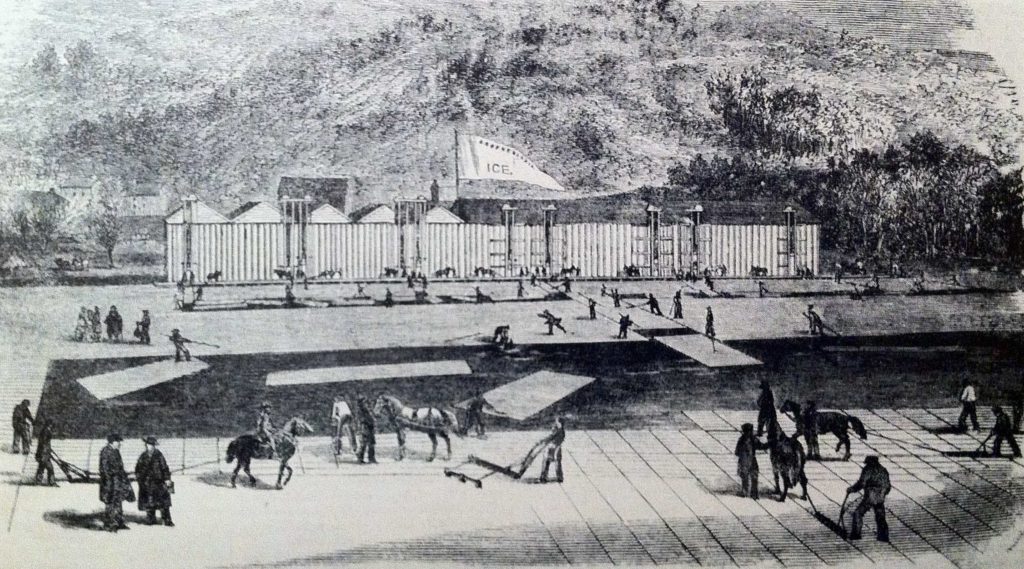
With the temperature expected to reach 94 degrees today in Cleveland, Ohio, this introduction of how to make an ice house seems timely and comes courtesy of “The New England Farmer; A Monthly Journal devoted to Agriculture, Horticulture and their Kindred Arts & Sciences, Volume VII.”
ICE HOUSES
Ice is no longer considered an article of luxury, merely, but one of healthful economy; it is cheaply and easily stored and preserved when the right methods are pursued, and to those who make it a matter of merchandize, one of considerable profit. The letter below will speak for itself.
Mr. Editor:—The ice house that I built three years since, keeps ice the entire year. It stands on the north side of my wood shed, and is made by setting a frame about ten feet square into the ground, a plank set up on the outside, and dirt thrown in to hold them up to the frame. The bottom is covered with a lower floor, the sides and roof made of rough boards, the sides being open as a common barn, with a covering of straw on the ice. Most of the ice houses in this vicinity are made too close, which causes the ice to melt; the air should have free circulation through the building. I think the plan much better and cheaper than to build them above ground; mine cost about ten dollars.
Respectfully yours, –
C. S. HAMILTON.
Hartford, Ct., Nov. 21, 1854.
Mr. E. Marks, in a late number of the Rural New-Yorker, gives the following directions for making a small ice house, which is pretty much on the same plan as the above, though perhaps not so durable.
“Make a box eight feet square, by nailing hemlock planks which are two inches thick, on to hemlock scantling. Let one side of the box be seven feet high, and the side directly opposite ten feet high. This gives a roof eight feet long with a slant of three feet.
“It is well to have the roof boards extend over the sides of the box. Double boarding with hemlock makes a sufficient roof. Set this box on the top of the ground, in a dry and shady place, where surface water will not accumulate. No planks are needed on the bottom of the box, but sawdust must be placed on the ground inside the box, to the depth of one foot, and over this place loose boards for the ice to lay upon. Cut the cakes of ice two feet square, and build a tower of ice six feet square in the center of your box, (or icehouse, we will now call it) by laying the cakes compactly together, filling all crevices with sawdust as you proceed. We have now a cube of ice, with a space all around, between the ice and the planks. Fill this space with sawdust, and cover the top of the ice with the same, eighteen inches deep, and you have ice enough secured to last a family through the season. The upper three feet of the side which is ten feet high should not be boarded up, but left for ventilation, and a place of access to the ice, and this aperture may be enlarged as convenience may require, while using the ice, and for more conveniently filling it in. About eight hundred feet of lumber will be required, and the merest tyro in the use of tools can make it. Fresh sawdust is best, but it may be used a second winter. The dust can easily be washed from the ice at the time of using.”